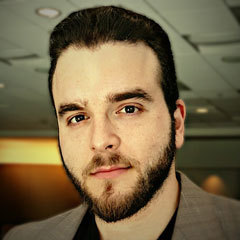Bone Deep…CBID Alumni Spotlight
January 11, 2017
 When Maxim Budyansky, MSE ’11, and Neil Shah, MSE ’11, entered the yearlong David E. Swirnow Master of Science in Bioengineering and Design Program, they knew they felt passionate about medicine and engineering. But they had no particular idea where those passions would lead them.
When Maxim Budyansky, MSE ’11, and Neil Shah, MSE ’11, entered the yearlong David E. Swirnow Master of Science in Bioengineering and Design Program, they knew they felt passionate about medicine and engineering. But they had no particular idea where those passions would lead them. The answer turned out to be deep into the cancellous, or spongy, layers of our bones. In collaboration with three spine surgeons at the Johns Hopkins University School of Medicine, Budyansky and Shah have invented a device intended to radically improve the process of harvesting autologous bone grafts. Their Connecticut-based startup, Avitus Orthopaedics, received FDA clearance in late 2015 to begin marketing the device, known as the Avitus Bone Harvester.
Autologous bone grafts are used in a wide range of spine, orthopedic, maxillofacial, and dental surgeries. In the procedure, a surgeon scoops out a portion of a patient’s spongy bone and marrow—often from the pelvis, femur, or tibia—and transfers the material to the site of a fracture or to a bony void, to aid in the healing and regeneration process.
“The traditional method of harvesting bone grafts is inefficient for the surgeon and creates complications for the patients,” says Budyansky, who is the firm’s chief technology officer.
Where the traditional technique requires the surgeon to repeatedly make small scoops through a large incision, Budyansky and Shah’s device is suction-based and minimally invasive.
“Our technology enables surgeons to harvest large volumes of cancellous bone and marrow through a simple and efficient approach that’s minimally invasive to patients and efficient for surgeons,” Budyansky says.
Shah, the firm’s CEO, says that he had no expectation of founding a startup when he entered the Center for Bioengineering Innovation and Design program.
“I’ve always had an entrepreneurial itch,” he says, “but I didn’t see myself jumping in with both feet so early. At the end of the program, Maxim and I both secured some job offers, but we did some soul searching and decided that we truly believed in what we’re trying to achieve here.”
— DAVID GLENN
Categories: Alumni Stories


